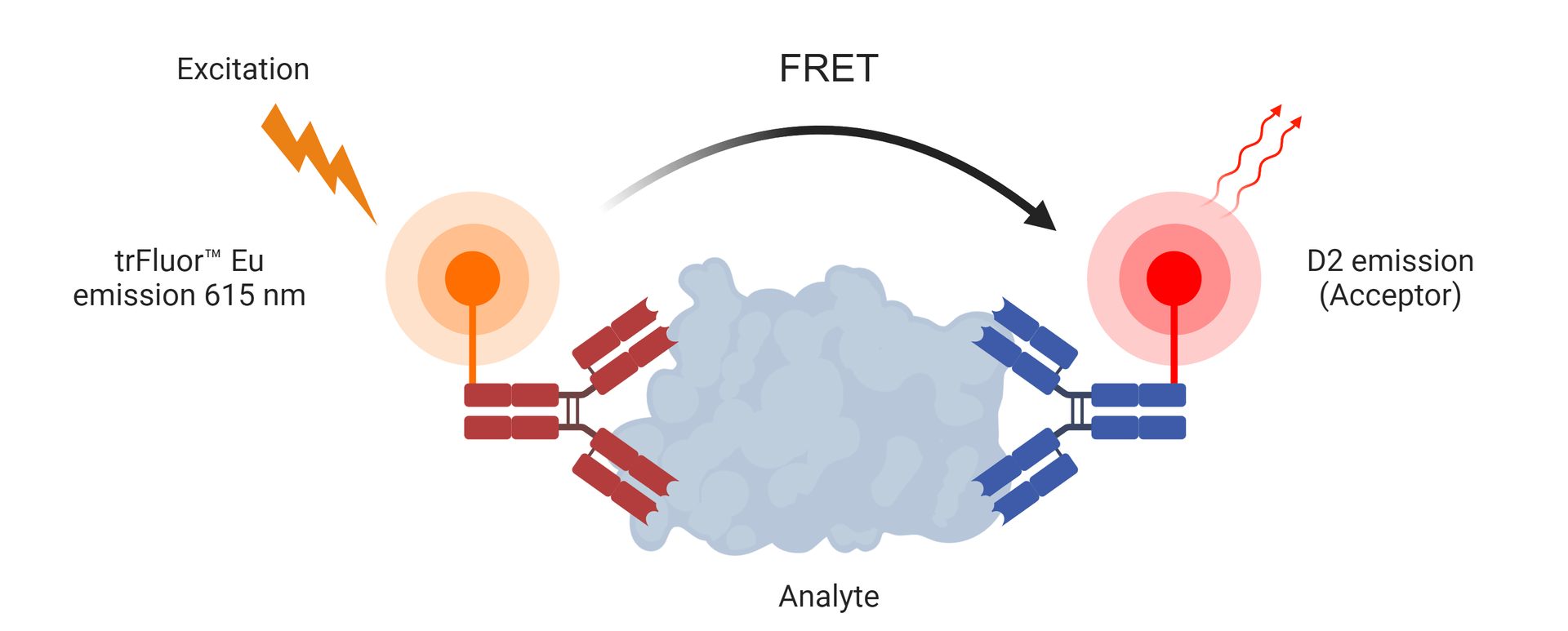Buccutite™ Rapid trFluor™ D2 Acceptor Antibody Labeling Kit
Microscale Optimized for Labeling 100 ug Antibody Per Reaction
Many biological compounds present in cells, serum, or other biological fluids are naturally fluorescent, and thus the use of conventional, prompt fluorophores leads to serious limitations in assay sensitivity due to the high background caused by the autofluorescence of the biological molecules to be assayed. The use of long-lived fluorophores combined with time-resolved detection (a delay between excitation and emission detection) minimizes prompt fluorescence interferences. Our trFluor™ Eu probes enable time-resolved fluorometry (TRF) for the assays that require high sensitivity. These trFluor™ Eu probes have large Stokes shifts and extremely long emission half-lives when compared to traditional fluorophores such as Alexa Fluor or cyanine dyes. Compared to the other TRF compounds, our trFluor™ Eu probes have relatively high stability, high emission yield, and the ability to be linked to biomolecules. Buccutite™ Rapid trFluor™ D2 Acceptor Antibody Labeling Kit provides a fast way to prepare the D2 acceptor-labeled bioconjugates that are used to pair to the trFluor™ Eu-labeled probes to develop TR-FRET assays.


| Catalog | Size | Price | Quantity |
|---|---|---|---|
| 1302 | 2 Labelings | Price |
Spectral properties
| Excitation (nm) | 651 |
| Emission (nm) | 660 |
Storage, safety and handling
| H-phrase | H303, H313, H333 |
| Hazard symbol | XN |
| Intended use | Research Use Only (RUO) |
| R-phrase | R20, R21, R22 |
Documents
Contact us
| Telephone | |
| Fax | |
| sales@aatbio.com | |
| International | See distributors |
| Bulk request | Inquire |
| Custom size | Inquire |
| Technical Support | Contact us |
| Request quotation | Request |
| Purchase order | Send to sales@aatbio.com |
| Shipping | Standard overnight for United States, inquire for international |
Page updated on December 16, 2025

